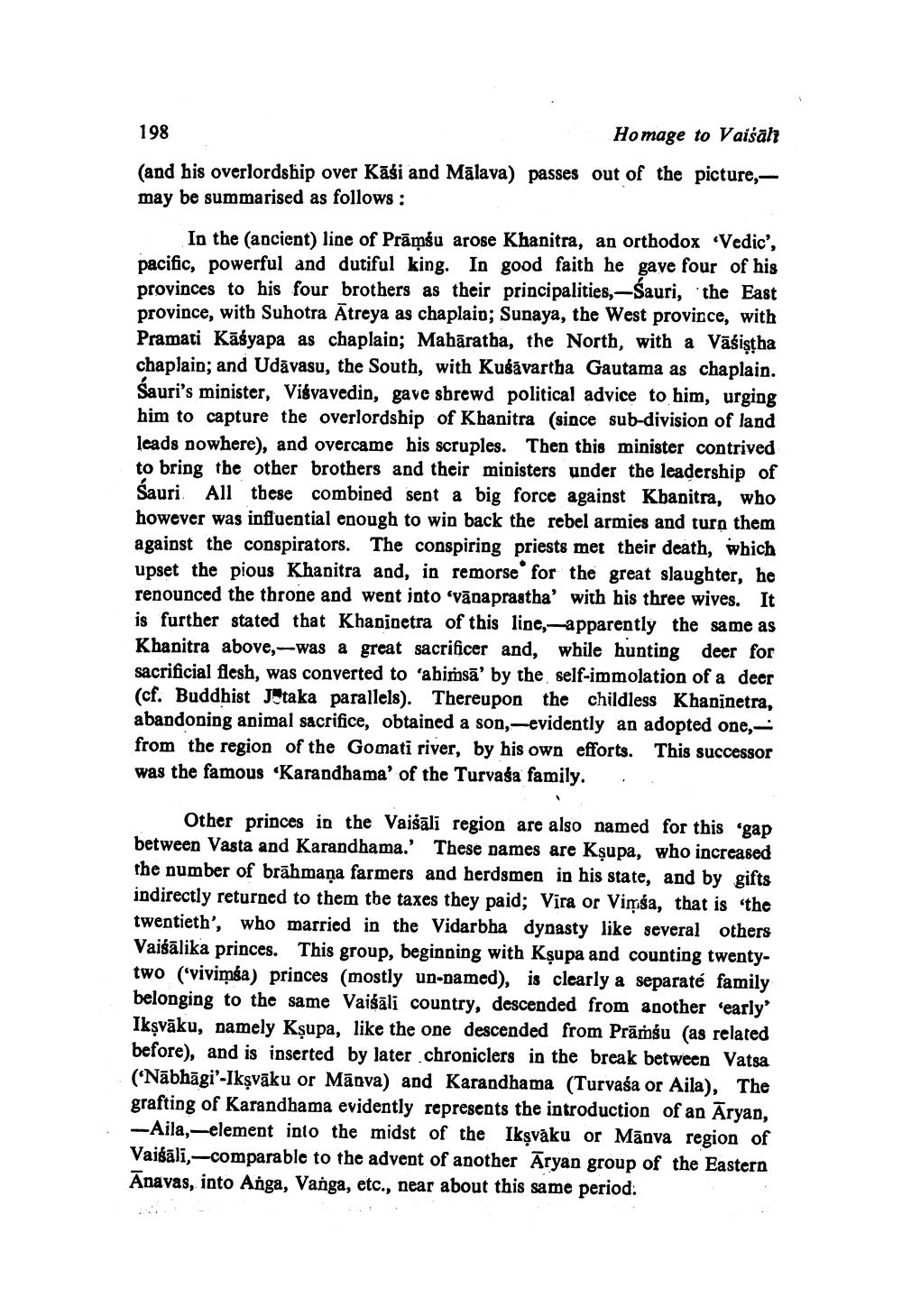________________ 198 Homage to Vaisah (and his overlordship over Kasi and Malava) passes out of the picture, may be summarised as follows : In the ancient) line of Pramsu arose Khanitra, an orthodox Vedic', pacific, powerful and dutiful king. In good faith he gave four of his provinces to his four brothers as their principalities,-Sauri, the East province, with Suhotra Atreya as chaplain; Sunaya, the West province, with Pramati Kasyapa as chaplain; Maharatba, the North, with a Vasistha chaplain; and Udavasu, the South, with Kusavartha Gautama as chaplain. Sauri's minister, Visvavedin, gave sbrewd political advice to him, urging him to capture the overlordship of Khanitra (since sub-division of land leads nowhere), and overcame his scruples. Then this minister contrived to bring the other brothers and their ministers under the leadership of Sauri All these combined sent a big force against Kbanitra, who however was influential enough to win back the rebel armies and turn them against the conspirators. The conspiring priests met their death, which upset the pious Khanitra and, in remorse for the great slaughter, he renounced the throne and went into 'vapaprastha' with his three wives. It is further stated that Khaninetra of this line,-apparently the same as Khanitra above,--was a great sacrificer and, while hunting deer for sacrificial flesh, was converted to 'ahimsa' by the self-immolation of a deer (cf. Buddhist Jotaka parallels). Thereupon the childless Khaninetra, abandoning animal sacrifice, obtained a son,-evidently an adopted one, -- from the region of the Gomati river, by his own efforts. This successor was the famous Karandhama' of the Turvasa family. . . Other princes in the Vaisali region are also named for this gap between Vasta and Karandhama.' These names are Ksupa, who increased the number of brahmana farmers and herdsmen in his state, and by gifts indirectly returned to them the taxes they paid; Vira or Vimsa, that is the twentieth', who married in the Vidarbha dynasty like several others Vaisalika princes. This group, beginning with Ksupa and counting twentytwo ('vivimsa) princes (mostly un-named), is clearly a separate family belonging to the same Vaisali country, descended from another early Iksvaku, namely Ksupa, like the one descended from Pramsu (as related before), and is inserted by later chroniclers in the break between Vatsa ('Nabhagi'-Iksvaku or Manva) and Karandhama (Turvasa or Aila), The grafting of Karandhama evidently represents the introduction of an Aryan, -Aila, -element into the midst of the Iksvaku or Manva region of Vaigali,-comparable to the advent of another Aryan group of the Eastern Anavas, into Anga, Vanga, etc., near about this same period:




